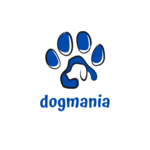2024's Best Practices for Safely Introducing a Raw Food Diet to Your Dog
As pet owners become increasingly conscious of their pets’ health and well-being, many are turning to raw food diets as a natural alternative to commercial dog foods. A raw food diet, often referred to as BARF (Biologically Appropriate Raw Food), typically includes raw meat, bones, fruits, vegetables, and supplements. Proponents of this diet argue that it mimics what dogs would eat in the wild and can lead to improved health, shinier coats, and increased energy levels. However, transitioning your dog to a raw food diet requires careful planning and consideration to ensure it is done safely and effectively. Here are the best practices for introducing a raw food diet to your dog.
Consult Your Veterinarian
Before making any changes to your dog’s diet, it is essential to consult with your veterinarian. Every dog is unique, and factors such as age, breed, health status, and activity level can influence their nutritional needs. A veterinarian can provide valuable insights and help tailor a raw food diet plan that meets your dog’s specific requirements. They can also monitor your dog’s health during the transition and address any concerns that may arise.
Start Gradually
Switching your dog’s diet abruptly can lead to digestive issues such as diarrhea or vomiting. To prevent this, it is best to introduce the raw food diet gradually. Start by mixing a small amount of raw food with your dog’s current food, gradually increasing the raw portion over several weeks. This slow transition allows your dog’s digestive system to adjust and reduces the risk of gastrointestinal upset.
Balance the Diet
A balanced diet is crucial for your dog’s overall health. Raw food diets should include a variety of meats, bones, organs, and plant-based ingredients to ensure all essential nutrients are provided. A typical raw food meal might consist of 80% muscle meat, 10% bone, and 10% organ meat. Additionally, incorporating vegetables and fruits can provide essential vitamins and minerals. It is also important to include supplements like fish oil for omega-3 fatty acids and vitamin E to ensure your dog gets a well-rounded diet.
Source High-Quality Ingredients
The quality of the ingredients used in a raw food diet can significantly impact your dog’s health. Choose fresh, high-quality meats from reputable sources to minimize the risk of bacterial contamination. Organic, grass-fed meats are often preferred as they are free from antibiotics and hormones. Avoid using meats that have been treated with preservatives or additives, as these can be harmful to your dog.
Practice Safe Handling and Hygiene
Raw meat can harbor harmful bacteria such as Salmonella and E. coli, which pose a risk to both your dog and your household. Practicing safe handling and hygiene is essential to prevent foodborne illnesses. Always wash your hands thoroughly with soap and water after handling raw meat. Clean and sanitize all surfaces, utensils, and bowls that come into contact with raw food. Store raw meat in sealed containers in the refrigerator or freezer to prevent cross-contamination with other foods.
Monitor Your Dog’s Health
Throughout the transition to a raw food diet, closely monitor your dog’s health and behavior. Look for signs of improvement such as increased energy levels, a shinier coat, and healthier skin. Conversely, watch for any adverse reactions like digestive issues, lethargy, or changes in appetite. Regular veterinary check-ups are essential to ensure your dog is thriving on the new diet. Blood tests and other diagnostic tools can help assess your dog’s overall health and nutritional status.
Adjust Portions Based on Your Dog’s Needs
Every dog’s caloric and nutritional needs are different, and these can vary based on factors such as age, weight, and activity level. It is important to adjust portions accordingly to prevent overfeeding or underfeeding. A general guideline is to feed your dog approximately 2-3% of their body weight in raw food daily, but this can be adjusted based on their specific needs and metabolism. Regularly assess your dog’s body condition and make portion adjustments as needed.
Introduce New Foods Slowly
When introducing new types of meats, bones, or plant-based ingredients, do so gradually. This allows you to observe how your dog reacts to each new food and identify any potential allergies or intolerances. Start with small amounts of the new food and increase gradually over several days. If your dog shows signs of an adverse reaction, such as itching, gastrointestinal upset, or changes in behavior, discontinue the new food and consult your veterinarian.
Educate Yourself
The world of raw feeding can be complex and sometimes overwhelming. Educate yourself about the nutritional needs of dogs and the principles of raw feeding. Numerous resources, including books, online forums, and professional consultations, can provide valuable information and support. Joining a community of raw feeders can also offer practical tips and shared experiences to help you navigate the journey.
Be Prepared for Challenges
Transitioning to a raw food diet can come with challenges, such as finding reliable sources for ingredients, managing costs, and ensuring a balanced diet. Be prepared to invest time and effort into meal planning and preparation. It may take some trial and error to find the right balance and routine that works for you and your dog. Patience and persistence are key to successfully implementing a raw food diet.
conclusion
In conclusion, introducing a raw food diet to your dog can offer numerous health benefits, but it requires careful planning and attention to detail. By consulting your veterinarian, starting gradually, balancing the diet, sourcing high-quality ingredients, practicing safe handling, monitoring your dog’s health, adjusting portions, introducing new foods slowly, educating yourself, and being prepared for challenges, you can ensure a smooth and successful transition. Your dog’s health and well-being are worth the effort, and with the right approach, a raw food diet can be a rewarding choice for your furry friend.



leave me your thoughts here